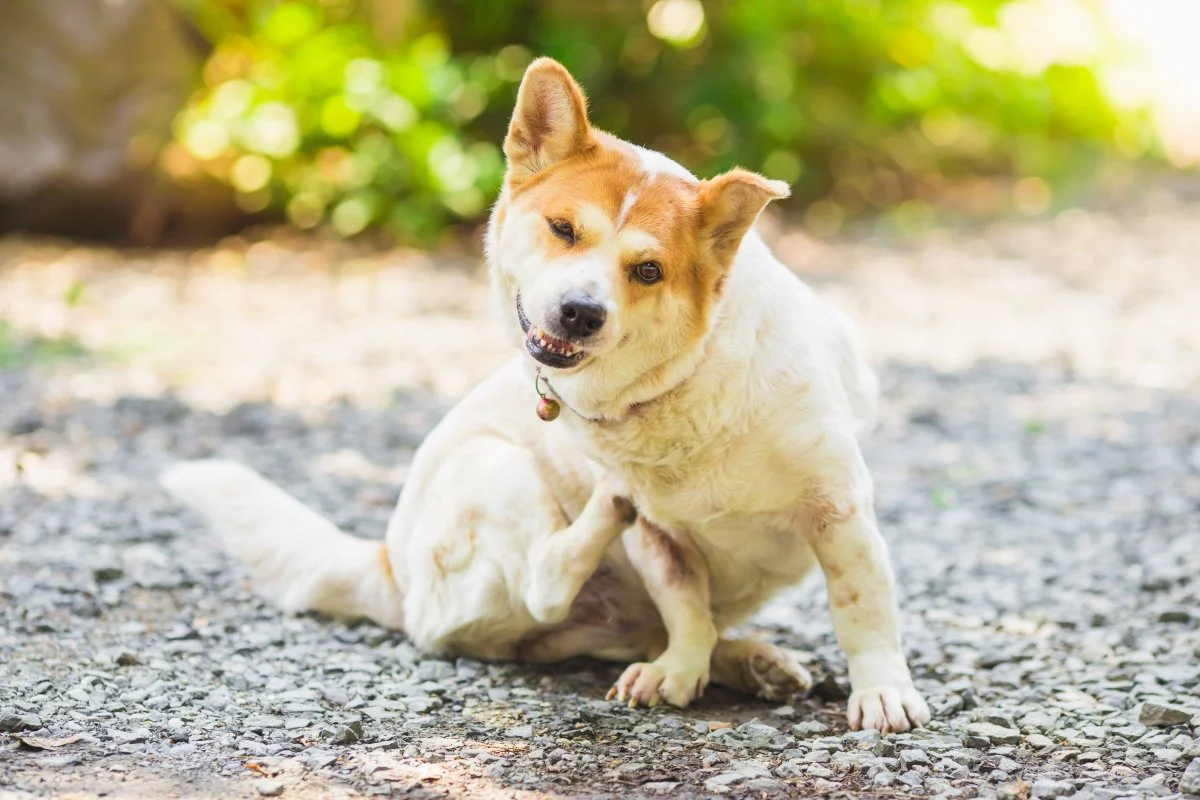If your dog constantly scratches, licks, or suffers from recurring skin issues, allergies might be the culprit. Dogs can be allergic to a variety of substances, ranging from environmental factors to food ingredients. Understanding the common causes of dog allergies and how to manage them effectively is essential for your pet’s health and happiness.
What Are Dog Allergies?
Dog allergies occur when a dog’s immune system overreacts to certain substances, also known as allergens. These allergens can trigger symptoms such as itching, redness, swelling, ear infections, and gastrointestinal issues. While some allergies are seasonal, others can persist year-round, making management crucial for your dog’s comfort.
10 Common Dog Allergies
1. Flea Allergy Dermatitis
Dogs allergic to flea saliva can develop intense itching and redness after just one bite. This is one of the most common canine allergies and often leads to secondary infections if not addressed promptly.
Management Tips:
- Use flea prevention products consistently.
- Maintain a clean environment to reduce flea infestations.
- Consult your vet for topical or oral medications to alleviate symptoms.
2. Food Allergies
Food allergies in dogs often result in symptoms like itching, ear infections, and digestive upset. Common culprits include beef, chicken, dairy, and grains.
Management Tips:
- Switch to a hypoallergenic or limited-ingredient diet.
- Conduct an elimination diet under veterinary guidance.
- Always read ingredient labels carefully.
3. Environmental Allergies (Atopic Dermatitis)
Environmental allergens such as pollen, mold, and dust mites can cause seasonal or year-round allergies in dogs. Symptoms often include sneezing, itchy skin, and watery eyes.
Management Tips:
- Bathe your dog with hypoallergenic shampoos to remove allergens.
- Use air purifiers and clean your home regularly.
- Consider immunotherapy or antihistamines prescribed by a vet.
4. Contact Allergies
Contact allergies occur when your dog’s skin reacts to substances like certain shampoos, cleaning products, or plants. Symptoms include localized redness and irritation.
Management Tips:
- Identify and remove the offending substance.
- Use pet-safe cleaning products and shampoos.
- Apply soothing balms or creams to irritated areas.
5. Seasonal Allergies
Seasonal allergies are typically triggered by pollen from trees, grass, or weeds. These are most common in spring and fall.
Management Tips:
- Limit outdoor time during peak pollen seasons.
- Clean your dog’s paws and coat after walks.
- Discuss allergy medications with your vet.
6. Mold Allergies
Mold allergies can cause respiratory symptoms like coughing and sneezing, as well as skin irritation.
Management Tips:
- Keep your home well-ventilated and dry.
- Use dehumidifiers to prevent mold growth.
- Regularly check for and eliminate mold in damp areas.
7. Dust Mite Allergies
Dust mites are a common indoor allergen that can cause year-round issues in dogs, leading to itchy skin and respiratory problems.
Management Tips:
- Wash your dog’s bedding frequently in hot water.
- Vacuum your home with a HEPA filter regularly.
- Use allergen-proof covers on furniture and beds.
8. Shampoo Allergies
Certain shampoos contain harsh chemicals or fragrances that may irritate your dog’s skin.
Management Tips:
- Opt for hypoallergenic and fragrance-free shampoos.
- Test new products on a small patch of skin before full use.
- Consult your vet for medicated shampoo recommendations.
9. Insect Allergies
Apart from fleas, dogs can be allergic to bites or stings from bees, ants, and mosquitoes.
Management Tips:
- Keep your yard free of standing water and nests.
- Apply pet-safe insect repellents.
- Seek veterinary care for severe reactions.
10. Household Chemical Allergies
Cleaning agents, detergents, and air fresheners can sometimes trigger allergies in dogs.
Management Tips:
- Switch to pet-safe, non-toxic cleaning products.
- Keep your dog out of recently cleaned areas until surfaces are dry.
- Rinse your dog’s paws after exposure to treated surfaces.
Recognizing Allergy Symptoms in Dogs
Common signs of allergies in dogs include:
- Persistent scratching or licking.
- Red, inflamed skin.
- Recurrent ear infections.
- Sneezing or watery eyes.
- Gastrointestinal issues like vomiting or diarrhea.
If you notice these symptoms, consult your veterinarian for an accurate diagnosis and treatment plan.
How to Manage Dog Allergies Effectively
Managing dog allergies requires a multi-faceted approach. Here are some general strategies:
- Regular Vet Visits: Schedule routine check-ups to monitor and treat allergies.
- Diet Adjustments: Identify and eliminate potential allergens in your dog’s food.
- Allergy Medications: Options like antihistamines, steroids, and immunotherapy can help control symptoms.
- Environmental Controls: Keep your home clean and allergen-free.
- Preventative Care: Use flea preventatives and avoid known irritants.
According to the American Kennel Club, early intervention and consistent management can significantly improve your dog’s quality of life.
Conclusion
Allergies in dogs are common but manageable with the right approach. By identifying the triggers and implementing effective management strategies, you can ensure your pet stays happy and healthy. Whether it’s a flea allergy or a sensitivity to dust mites, understanding your dog’s specific needs is the first step toward relief.
If your dog shows persistent symptoms, don’t hesitate to consult your veterinarian. With proper care and attention, you can keep your furry friend’s tail wagging for years to come.

